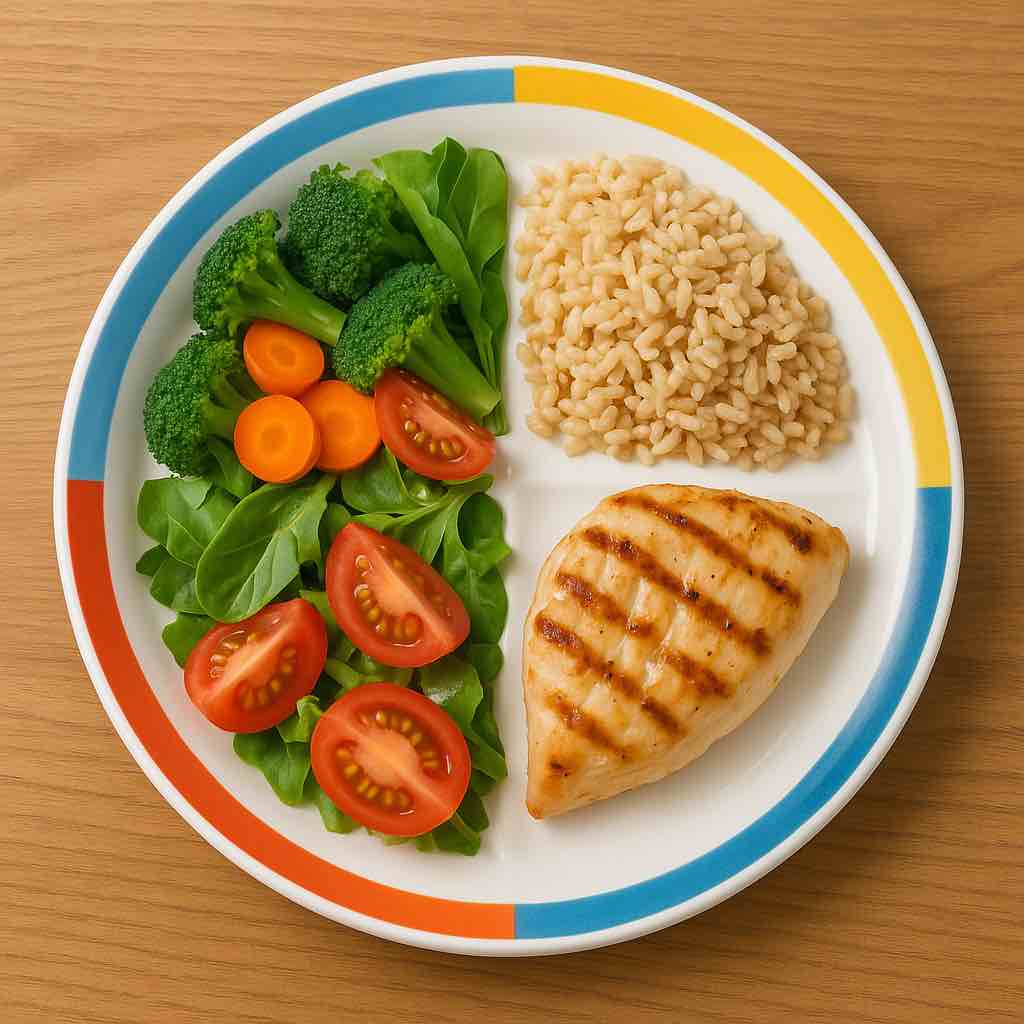Navigating nutrition with diabetes can feel like learning a new language. However, understanding a few key principles can make healthy eating more manageable and enjoyable. This guide will help you build a foundation for diabetes-friendly eating that works for your lifestyle.
Carbohydrate Basics: Your Body’s Primary Fuel
Carbohydrates have the biggest impact on your blood sugar levels. When you eat carbs, they break down into glucose (sugar) that enters your bloodstream. This doesn’t mean you should avoid carbohydrates entirely‚Äîyour body needs them for energy. Instead, focus on:
Types of Carbohydrates: Not all carbs are created equal. Complex carbohydrates (found in whole grains, legumes, and starchy vegetables) are generally better choices than simple carbohydrates (found in sweets, sodas, and processed foods). Complex carbs:
- Contain more fiber
- Digest more slowly
- Cause a more gradual rise in blood sugar
- Provide more vitamins and minerals
Carbohydrate Counting: Learning to count carbs helps you manage your blood sugar levels. One carbohydrate serving equals 15 grams of carbohydrates. Depending on your needs, a meal might include 3-4 carb servings (45-60 grams), while a snack might have 1-2 servings (15-30 grams).
Glycemic Index: This measures how quickly foods raise blood sugar levels. Low-glycemic foods (most vegetables, whole grains, and legumes) cause a slower, lower rise in blood glucose compared to high-glycemic foods (white bread, white rice, and sugary drinks).
The Plate Method: Visual Meal Planning
The plate method is a simple visual approach to creating balanced meals without measuring or counting:
- Fill half your plate with non-starchy vegetables: broccoli, spinach, carrots, green beans, tomatoes, or salad greens.
- Fill one quarter with lean protein: chicken, turkey, fish, eggs, tofu, or legumes.
- Fill one quarter with carbohydrates: whole grains, starchy vegetables, fruits, or dairy.
- Add a small amount of healthy fat: olive oil, avocado, nuts, or seeds.
This approach naturally limits carbohydrates while ensuring you get adequate protein, fiber, and nutrients.
Reading Food Labels: Becoming a Nutrition Detective
Food labels provide valuable information for diabetes management:
Serving Size: All nutrition information is based on one serving. Check how many servings are in the package—many packages contain multiple servings.
Total Carbohydrates: This includes starches, fiber, and sugars. This number, not just the sugar content, affects your blood sugar.
Dietary Fiber: Fiber is a carbohydrate that your body doesn’t digest. Some people subtract fiber from total carbs to get “net carbs.”
Added Sugars: These are sugars added during processing, not naturally occurring in foods like fruit or milk.
Ingredients List: Ingredients are listed by weight, from most to least. Look for whole foods as the first ingredients and be wary of multiple types of added sugars.
Practical Tips for Everyday Eating
Consistent Timing: Try to eat meals and snacks at similar times each day to help maintain steady blood sugar levels.
Balanced Combinations: Pair carbohydrates with protein and healthy fats to slow digestion and prevent blood sugar spikes. For example, eat an apple with peanut butter rather than an apple alone.
Portion Awareness: Even healthy foods can raise blood sugar if eaten in large quantities. Use measuring cups or a food scale until you become familiar with appropriate portion sizes.
Hydration: Choose water, unsweetened tea, or other sugar-free beverages most of the time. Limit juice and avoid sugary drinks.
Plan Ahead: Keep diabetes-friendly snacks available and plan meals in advance to avoid impulsive, less healthy choices when hungry.
Sample One-Day Meal Plan
Breakfast:
- 1/2 cup old-fashioned oatmeal topped with cinnamon
- 3/4 cup blueberries
- 1 tablespoon chopped walnuts
- 1 boiled egg
Lunch:
- Turkey and vegetable wrap using a whole-grain tortilla
- 1 cup mixed salad with olive oil and vinegar dressing
- 1 small piece of fruit
Afternoon Snack:
- 1/4 cup hummus with raw vegetables
- 1 small apple
Dinner:
- 3 oz grilled salmon
- 2/3 cup brown rice
- 1 cup roasted non-starchy vegetables
- Side salad with olive oil dressing
Evening Snack (if needed):
- 1/4 cup cottage cheese with a few berries
Making It Work for You
Remember that diabetes-friendly eating doesn’t mean eliminating all your favorite foods. The key is moderation, balance, and being mindful of how different foods affect your blood sugar.
Start by planning just one day of diabetes-friendly meals this week. Pay attention to how these meals make you feel and check your blood sugar to see how your body responds. Use this information to gradually build a sustainable eating pattern that works for your unique needs and preferences.
With time and practice, these nutrition principles will become second nature, helping you manage your diabetes while still enjoying delicious, satisfying meals.

